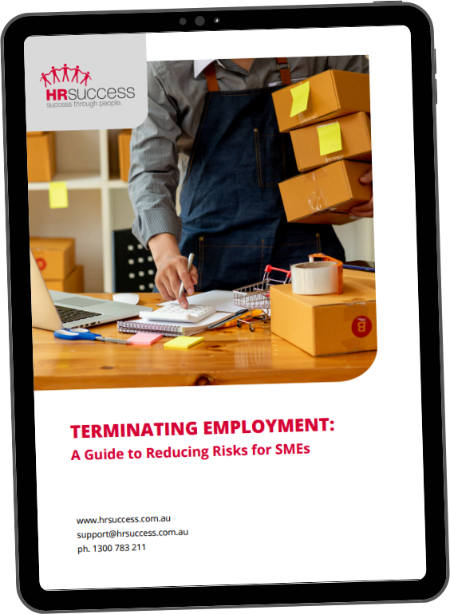I don’t know if it’s something in the winter air, but we have in recent weeks received an unusual number of requests from business owners and managers seeking assistance to manage the risks associated with terminating employees after sustained poor performance, or in cases of misconduct.
And it appears that they are right to be wary – recent statistics released by Fair Work Australia reveal that in the first 3 months of 2017, more than 3,400 unfair dismissal applications were lodged, and there are few signs that the high number of applications will slow down any time soon.
While looking for and pursuing opportunities to improve conduct and performance so that the person is able to make on ongoing positive contribution to the business should of course always be the first option, the reality is that there are cases where termination of employment is the only remaining or feasible option.
In these cases, while the risk of adverse legal action can generally not be completely eliminated, there are actions that employers can take to reduce their exposure. Protective actions essentially relate to ensuring (and being able to demonstrate), that a fair and reasonable process has been undertaken.
The following tips can help manage the risks associated with dismissals related to poor performance:
- Develop and communicate a performance management policy that clearly outlines how underperformance will be managed. Apart from helping all parties understand what they need to do when these issues arise, it can also help prevent employees feeling victimised if management begins to take action in accordance with the policy.
- Be sure you are able to demonstrate that the employee has been made awareof the expectations/standards required (eg. via an up-to-date position description, regular performance reviews, documented and specific conversations about what is required).
- Ensure there is evidence that the employee has been made aware of shortfalls on at least a couple of occasions (eg. previous performance review discussions, verbal warning evidenced by diary notes plus at least 1 and preferably 2 or 3 written warnings).
- Ensure that you are able to demonstrate that the employee has been offered reasonable supportto achieve the expected standard of performance (time, reasonable access to training if needed), that they have been given opportunity to explain any other issues that might be temporarily impacting performance, and that a reasonable period has been provided within which to achieve the standard.
- If you get to the point of needing to have formal meetings with the employee regarding their performance, give them adequate notice(minimum 24 hours), ensure they are aware that the meeting is to discuss performance issues and, particularly if termination is at some stage a possibility, offer them the opportunity to bring an observer/support person. It may be wise to also have an observer of your own in attendance.
- When discussing performance issues it’s important to not be seen to pre-empt the outcome. Discuss the issues, seek an explanation and, if the explanation is not sufficient, then issue a formal warning after the meeting.
- Formal warningsshould include details of the standards to be achieved, any support that has been or will be made available, other relevant issues discussed, the date on which performance will be again reviewed and the possible consequences of not achieving the required standard (up to and including termination of employment). The employee should also be provided with a further opportunity to formally respond to the issues raised. The precise details of standards to be achieved could be documented in a Performance Improvement Planor similar.
- Have the employeesignas having received and understood the relevant documents (they don’t have to agree with your assessment, just acknowledge their receipt and understanding). If they refuse to sign, make a note to this effect on the documentation.
- If the matter does proceed to termination, ensure that the termination is confirmed in writing and that requirements relating to providing adequate notice of termination and correct payment of final wages are met.
Of course, throughout the process, regular follow up meetings should be held. They can be used as an opportunity to discuss progress and explore any further training or other support the employee might need to meet your expectations. Where performance has improved, be sure to recognise this.
Further information is available on the Ending Employment section of the Fair Work Australia website – click here (for owners or managers in businesses with fewer than 15 employees, be sure to review the Small Business Fair Dismissal Code).
Of course, feel free to also call us on 1300 783 211 for a confidential discussion or direct support. We can, for example;
- Draft and help you implement an appropriate performance management policy within your business
- Set performance expectations through the development of sound position descriptions
- Provide guidance to manage specific instances of underperformance, including drafting letters of notice of meetings, documenting performance discussion outcomes etc…
- Attend meetings with you as your support person.
The information in this article is general in nature and should not be relied upon as legal advice. Business owners and managers are advised to seek specific advice based on their individual circumstances.


